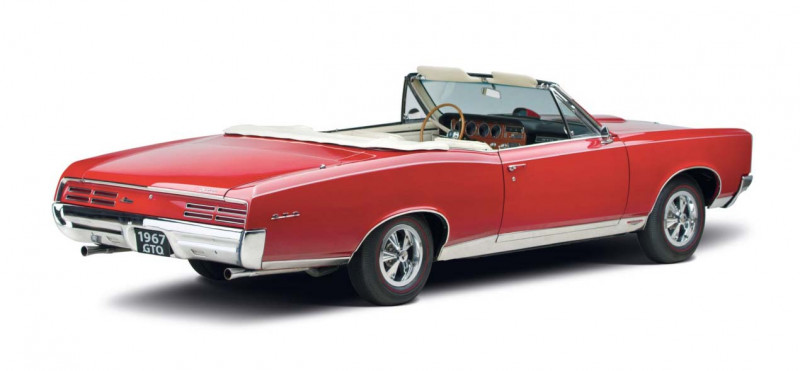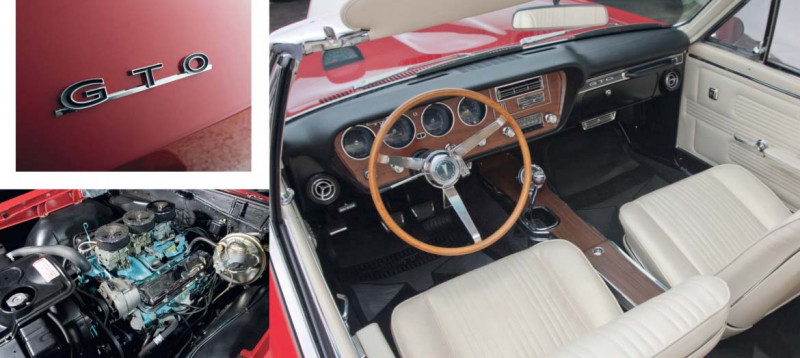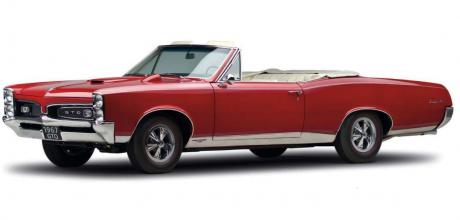1966 Pontiac GTO
The ‘goat’ brought real muscle that defined an era
There are some who refer to the Pontiac GTO as ‘the great one’, while many others regard it as ‘the Goat’. As much as this says about the hi-po Pontiac’s place in the muscle-car pantheon (and Americans’ failed grasp of initialisations and acronyms), it also reminds us that it doesn’t take much in America to be the greatest of all time.

Looking at you, most-ever-voted-for US president, Joe Quincy Magoo.
The GTO was a marketing masterstroke, creating the identities of both the American ‘muscle car’ and of Pontiac executive John Z DeLorean. It was he who took Pontiac’s mid-sized, typically six-cylinder Tempest coupe and, noting the popularity of the 5.3-litre V8 LeMans option, decided to step things up for 1964 with a 6.4-litre V8 and a package of handling upgrades.

This performance push was in part a means to retain performance credibility with baby-boomer buyers after GM’s decision in January 1963 to place an internal ban on motorsport.
In addition, GM policy mandated 10 pounds of vehicle weight per cubic inch of engine displacement (or 4.5kg per 16.4cc). For the Tempest’s ‘A-body’ platform, that meant a ceiling of 5.4-litres. But DeLorean and his team found that the wording only referred to a model’s base engine line-up; it didn’t mention optional engines.

DeLorean sacrilegiously stole the GTO nomenclature from Ferrari’s 1962 250 Gran Turismo Omologato, although a curious side note is that Pontiac actually did homologate the original Tempest LeMans GTO with the FIA in July 1964.
The GTO became a stand-alone model in 1966, based on the substantially restyled ’65 Tempest. The vertically stacked headlights and tapered, split grille became as distinctive as the hooded headlights and gaping mouth of the arch-rival Ford Mustang.
Mild styling upgrades for 1967 included the move from louvred taillights to the eight-slit design of our featured ’67 Montego Cream convertible. Under the bonnet, the staple ‘389’ (6.4-litre) was bored to 6.6 litres and offered with a trio of power outputs, peaking with the 268kW/594Nm High Output version.
Turned out that 1966 would also be the GTO’s peak, with 96,946 sold that year across the three body styles (hardtop, coupe and convertible). Sales began to slide in ’67, amid growing social and legislative pressures.
BARRELS OF LAUGHS
In 1966 the GTO-defining 6.4-litre V8, which had put Pontiac on the performance map since 1959, was bored to 6554cc (400 c.i.) and offered with economy (autoonly), standard or High Output versions, the latter two proving by far the most popular. The Standard produced 250kW/598Nm; the HO made 268kW/594Nm, both being fed by a Rochester four-barrel carb. HO options included the wild Ram Air, which brought a different cam, stronger valve springs and open bonnet scoops.
A DIAL TO RAISE A SMILE
Under the GTO’s curvy sheetmetal sat a separate ladder chassis, with front control arms and coil springs and a live axle at the rear, also coil-sprung, and with anti-roll bars. Brakes were finned drums or optional vented discs up front and finned drums at the rear, while the 14-inch steel ‘Rally 1’ wheels carried F70-14 ‘redline’ tyres. Options included Strato bucket seats, a custom sports steering wheel and – coolest of all – a bonnet-mounted tacho, a ’67 debut.
IN DETAIL
- 1650 14.7 KG KERB WEIGHT
- 1964 LAUNCH YEAR OF TEMPEST GTO
- 4 TEMPEST
- 4-POT WAS LITERALLY HALF A 389 V8
- 9517 TOTAL 1967 GTO
- 14.7STANDING QUARTER


